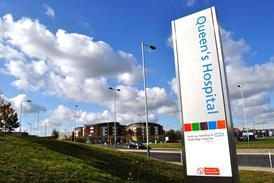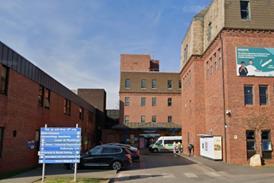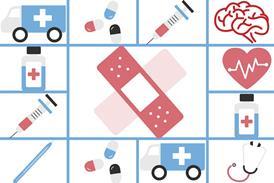The folllowing case studies, in association with York Health Economics Consortium, show how two trusts are assessing - and realising - the potential of radical change in services for long term conditions
Case study 1: Stoke and North Staffordshire
Clinicians and commissioners have a mutual goal: to improve outcomes for patients while getting more bang for the NHS buck.
But getting all the relevant players around the table - and agreeing a way forward - isn’t always easy.
According to John Harvey, a consultant in public health, the current conditions of restricted resources and clinically led commissioning offer opportunities to reconfigure the way that the NHS does things; it just means thinking a little bit differently.
“There’s an envelope of resource, and we have to try to get the best out of it,” he says. “That means taking an holistic approach and being prepared to use the resource in a different way.”
”You’re applying a model that helps you redistribute the way that resource is used and understand how resource is spent”
Dr Harvey is working with Stoke and North Staffordshire clinical commissioning groups to improve the way that respiratory services are configured. Working across the two local authorities, he believes that the public health function has an important role in helping commissioners and providers to partner in taking a longer term view, benefiting patients and the local healthcare economy.
“Stoke and North Staffordshire had seen respiratory disease as an area where outcomes weren’t as good as they could be,” he explains. “Respiratory services cover a wide area - from the acute, such as chest infections, through things like sleep services, to long term conditions like asthma and COPD [chronic obstructive pulmonary disease]. It covers different populations, who have different needs, which makes it particularly complex.”
Dr Harvey is advising a respiratory group, which includes CCG representation and clinicians and managers from local providers.
“Services are under pressure,” he says. “What we’re trying to do is identify potential problems and decide what improvements can be made.”
Because of their complexity, and diverse patient populations, respiratory services are almost a microcosm of the NHS, he says. That means that solutions identified for making respiratory services more effective could well be valuable for other services, particularly those serving people with long term conditions.
Programme budgeting and marginal analysis
One of the techniques being used in trying to decide how better to configure services is programme budgeting and marginal analysis (PBMA). This process - which involves looking at the money invested in a service and seeing how effectively it is being used - is popular with clinicians and managers. He attributes that to its ability to give a better idea of the likely impact of changing the way that resources are managed within a service or disease area.
“It brings together epidemiology and the financial data with the clinical pathway. It means we can make decisions that are well-founded.”
One desirable outcome is improving quality of life for patients, he says. If decision makers can get a handle on what that means, then they can make decisions about allocating resource accordingly.
‘Programme budgeting is something that clinicians can really engage with’
This might mean taking some of the resource which is currently invested in a particular part of the pathway, and looking at whether it would be better spent on other services. These might include community based developments, which could help with the twin goals of avoiding admission to hospital and allowing earlier, safe discharge if people do have to be admitted.
“For example, we’re looking at pulmonary rehabilitation, and the benefits that can be realised from investment,” says Dr Harvey.
To make the best use of resource, you have to take an honest and thorough look at current investment. “You’ve really got to understand what the data is telling you.”
He believes that PBMA is an approach that clinicians can engage with, so will be particularly useful in the new, clinically led commissioning environment.
“It will make it easier to bring it into play,” he says.
The approach has several benefits, he adds. “It allows you to model the whole pathway, rather than just one element. And you’re applying a model that helps you redistribute the way that resource is used and understand how resource is spent.”
The group turned to York Health Economics Consortium to model scenarios based on different funding approaches. Findings will be run past a stakeholder group, including patient representation, before any final decisions are made.
“I think the advent of CCGs has made it possible for this sort of approach to be grasped, and better understood,” he says. “Programme budgeting is something that clinicians can really engage with.”
Case study 2: Airedale Foundation Trust
Mature relationships and grown-up conversations should be at the heart of modern commissioning, particularly where innovative services are concerned.
That’s the view of Rebecca Malin, deputy director of strategy and business development at Airedale Foundation Trust.
As a pioneer in telehealth, Airedale is fast building a reputation as a provider of solutions that help meet the twin challenges of demographic change and tightening resources - so much so that the organisation is now providing services to a variety of areas across England.
‘All the care home staff have to do is press a green button and they are connected to the hub – you can point the camera at the resident and get advice on how to lift them safely’
According to Ms Malin, however, the existing payment system is not particularly geared to help commissioners who want to go down that route.
“The current tariff system means that an acute trust will get more for admitting someone than for a telehealth consultation,” she says. “It needs a grown-up discussion about doing the right thing for the patient.”
The trust has an excellent relationship with the local CCGs, and has also been attracting interest from elsewhere. But to make the case, it’s necessary to be able to demonstrate good results. The trust approached YHEC to assist in providing economic evaluation input for the project.
Popular option
At its most basic, the Airedale offering allows customers access to the telehealth hub, which is staffed, 24/7, by senior nursing staff who can provide expert advice. It is proving popular with care homes in particular.
The trust is currently rolling out its telemedicine service to around 200 care homes. Patients who would previously have had to go to A&E, or even been admitted, can now be “seen” virtually by senior nurses or doctors as required.
“The telehealth hub at Airedale has high band acute care nurses, who are highly skilled in acute medicine,” says Ms Malin. “All that the care home staff have to do is press a green button and they are connected to the hub. It can be for a range of things, including falls - you can point the camera at the resident and get advice on how to lift them safely, for example - or if someone has cut themselves, you can get advice on how to deal with it.
“Previously the default would have been to go to A&E. But if it’s a cut that needs gluing, you can get the local community team in to glue it.”
‘If we can contact the spinal injuries centre by video, then we could save a patient a long journey’
As well as providing fast and safe care, the hub can also provide reassurance and support to care home staff who might feel isolated, especially overnight, she adds. Almost as an unintended consequence, the system is providing education and upskilling to care home nurses.
The first cohort of 17 homes showed excellent results, she says, showing a reduction in hospital admissions of 45 per cent, and a 69 per cent reduction in A&E attendances. “If people were admitted, they were in hospital for 30 per cent less time - when they were discharged they could be supported by video.”
The technology has potential for innovative commissioners, Ms Malin says. She would like to see a greater number of partnerships set up nationally, which would mean that patients could be treated closer to home. For example, someone who has had a spinal injury, but who needs treatment for another condition which could be provided by the local district hospital, should not have to make their way to the specialist unit.
“We are a DGH, not a spinal injuries centre,” she says. “But if we can contact the spinal injuries centre by video, then we could save a patient a long journey.
“We believe in building up national operational partnerships.”
Commissioners have to look imaginatively at how to fund such developments and it might involve coming up with a locally defined tariff, which recognises the mutual benefit to the purchaser and the provider. For example, the trust might be “losing out” on the money for a hospital admission, but it can gain on things like improving flow and patient throughput.
“We’re seeing this as a means of patient-orchestrated care,” explains Ms Malin. “That means the patient decides what care they get, and when - the right care that they choose. The patient doesn’t care if it’s secondary care, primary care or social care; it’s all their care. We’re helping to make this happen.”



























No comments yet